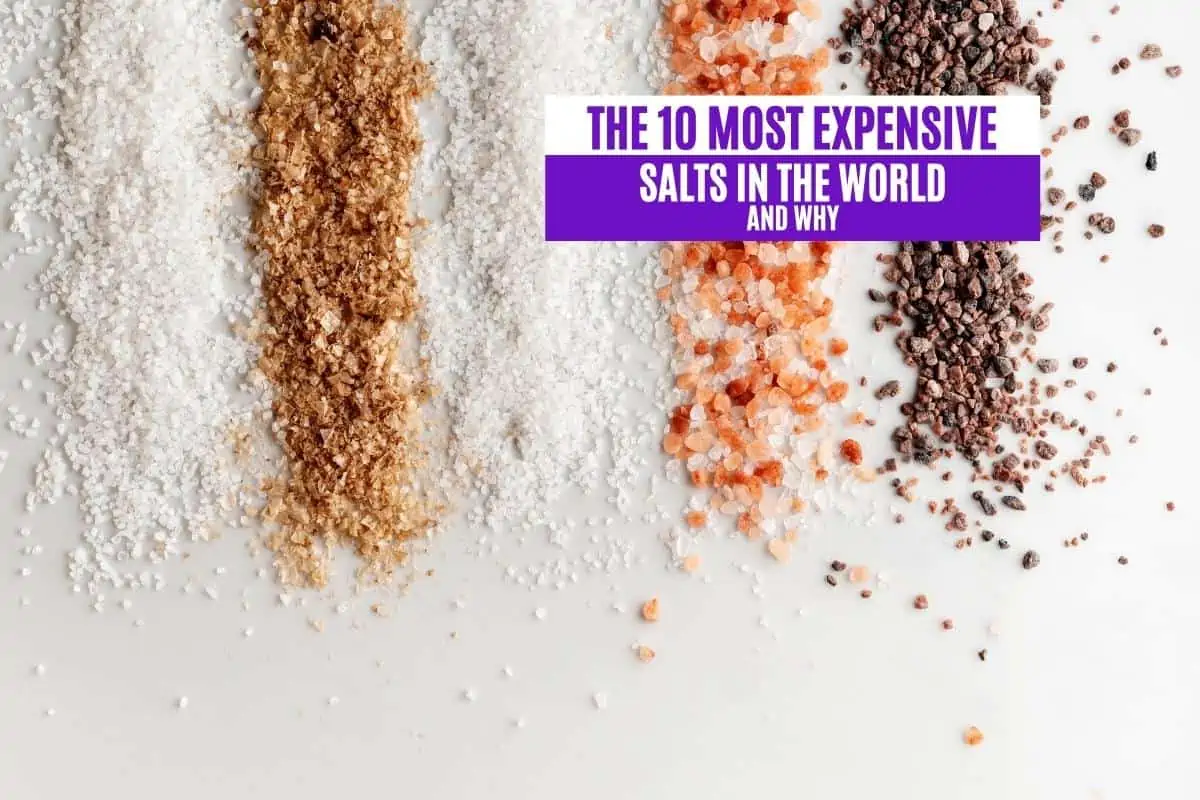Did you know there’s a whole underworld of salts out there?
Turns out it’s not just sea salt and kosher salt – there are over 22 types of flaked and granular salts that can make everything from olives to meat more delicious.
Sodium chloride, or table salt, is the most common salt in the world. It is inexpensive and can be found in every kitchen cabinet around the planet.
But what about all those other kinds of salts? They are not as common and some of them are really expensive too!
Salt is more than just something you sprinkle on your food.
In fact, it has many important uses in manufacturing, agriculture, and even road safety. Salt is used in the manufacturing of soap and glass and as an electrolyte additive in sports drinks.
So what makes these salts so expensive?
Explore our list of the world’s most expensive salts, find out where they come from and why they have the price tags they do.
Here Are the Top 10 Most Expensive Salts in the World:
- Korean (Amethyst) Bamboo Salt – $200 per pound
- Kamebishi Soy Salt – $155 per pound
- Bora Bora Sea Salt – $145 per pound
- Saffron Salt – $115 per pound
- Iburi Jio Cherry Smoked Salt – $100 per pound
- Kilauea Onyx Salt – $75 per pound
- Icelandic Lava Salt – $70 per pound
- Icelandic Flake Salt – $60 per pound
- Blue Persian Rock Salt – $55 per pound
- Asin Tibuok “Dinosaur Egg” Salt – $50 per pound
10. Asin Tibuok “Dinosaur Egg” Salt – $50 per Pound
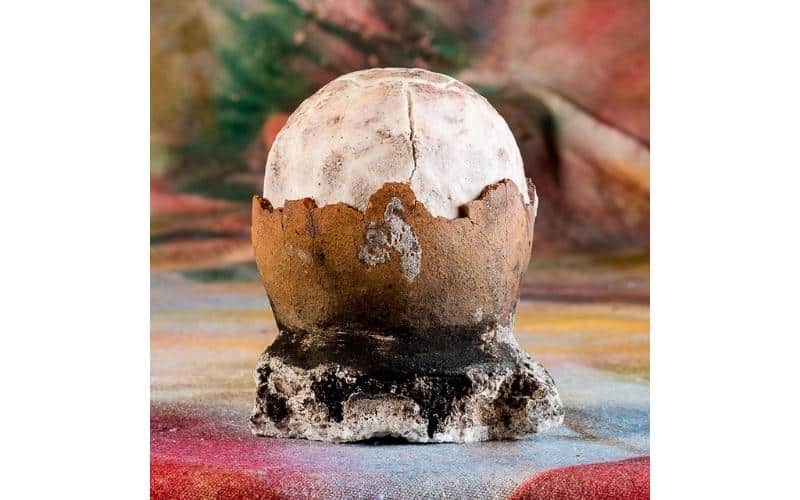
These dome-shaped salt eggs are an absolute masterpiece from the islands of the Philippines. The process of making the Asin Tibuok salts involves soaking, chopping, drying, and burning coconut husks.
Seawater is then filtered through the activated charcoal which remains. That filtered seawater is poured into clay pots and roasted over a wood fire.
Why Is It So Expensive?
Producing this artisanal salt is a dying art. Soaking the coconut husks takes months and roasting the pots requires constant attention for 12 hours.
It’s a practice as old as time and it’s labor-intensive, which is why it’s such a pricey treat.
9. Blue Persian Rock Salt – $55 per Pound
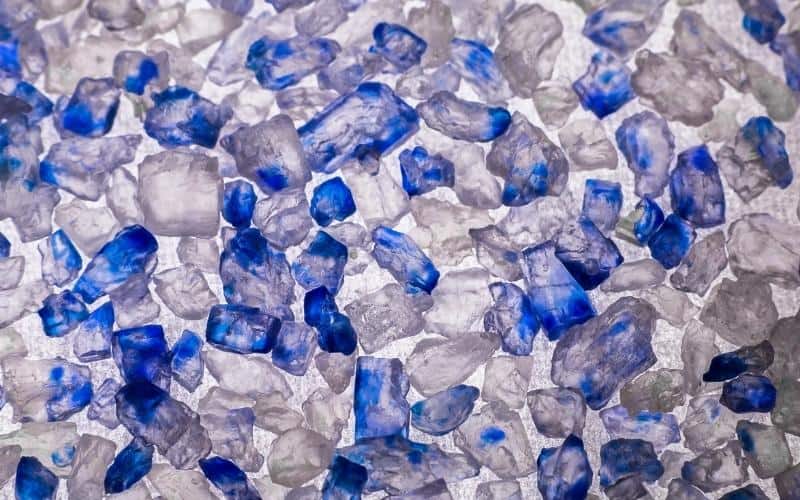
This magical salt is harvested from a salt mine in the northern region of Iran, formed under intense pressure from the Earth around it. It’s an incredibly clean salt as it has been hidden under the Earth’s surface, away from pollutants and contaminants.
The blue color is actually an optical illusion caused by the refraction of light through the salt crystals.
Rich in magnesium, iron, calcium, and potassium, Blue Persian Rock Salt has many health benefits too!
Why Is It So Expensive?
Blue Persian Rock Salt is the rarest salt on Earth. That’s why it is one of the most expensive salts in the world! It’s also not easy to extract and only about 60-80 tonnes get harvested each year.
8. Icelandic Flake Salt – $60 per Pound
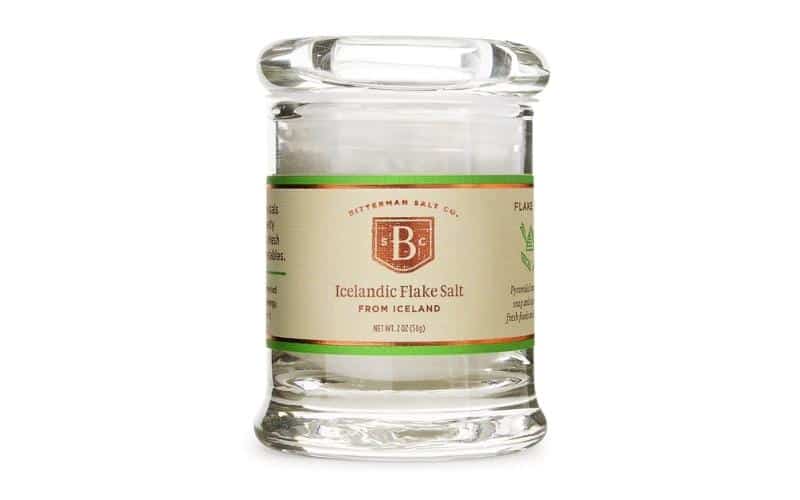
We have a rich variety of salts in the world but Icelandic salt is the only one that is harvested using geothermal energy.
Seawater from the ice-cold northern Atlantic is heated by the naturally occurring hot springs. As the water evaporates, the concentration of salt increases, and small crystals start to form.
These are then harvested, dried, and packaged.
Interestingly, Icelandic Sea Salt can actually help your body stay hydrated, enabling you to perform at your peak in all areas of your life.
Why Is It So Expensive?
A very small amount of Icelandic Flake Salt is harvested each year making it a rare and truly artisanal product. It also has zero carbon footprint, which means its environmentally friendly and sustainable.
The entire process is done by hand, which of course contributes to its status as one of the most expensive salts in the world.
7. Icelandic Lava Salt – $70 per Pound
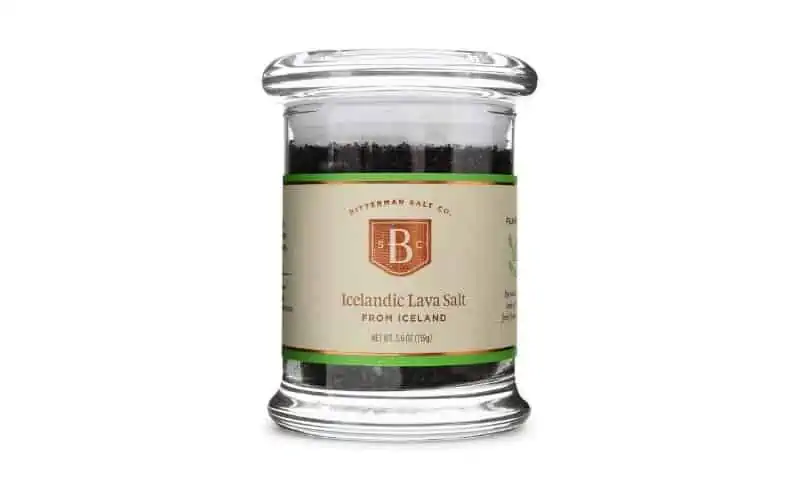
Icelandic Lava Salt takes the process a step further. Activated charcoal from volcanic lava rocks gets added to the seawater. This gives the salt an interesting color, making it intriguing and packed with health benefits.
The activated charcoal is a natural detoxifier, so it’s great for skin problems, digestive issues, and metabolism. Lava salts contain high amounts of minerals that the human body needs to function optimally.
These salts are also in high demand in some of the best restaurants in the world.
Why Is It So Expensive?
As mentioned before, only a very small amount of Icelandic sea salt is produced each year, and only a portion of that gets used to make Lava salts.
All the work is done by hand and the process is 100% green which is why Icelandic Lava Salt is worth its weight in, well, salt.
6. Kilauea Onyx Salt – $75 per Pound
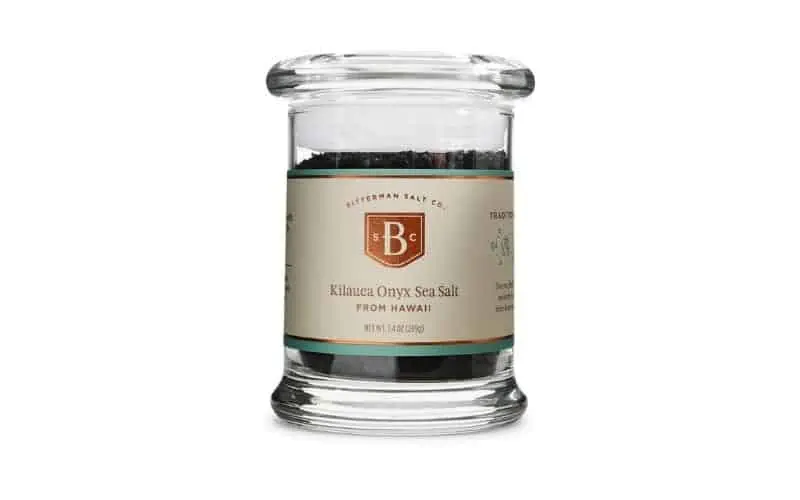
Kilauea Onyx Salt is a Hawaiian black lava salt, made from sea salt and activated charcoal from coconut husks.
This salt has the perfect balance of minerals and trace elements, making it a much healthier alternative to regular table salt. The black color comes from the activated charcoal, which also helps remove impurities from the body.
The result is a delicious and healthy alternative to regular table salt in any dish that needs a boost of strong savory flavor. It will also add the “Wow-factor” to your meal with its shimmering black color.
Why Is It So Expensive?
Kilauea Onyx Salt is the highest mineral content salt available on the market. It is solar-dried which means that it is not exposed to any chemicals or additives during the drying process.
This salt has an 84% sodium chloride content, so it is preferred by those who are on a low-sodium diet. The other 16% of this salt consists of over 80 minerals and electrolytes which are essential for our bodies.
These health benefits, and the process involved in producing Onyx Salt are what earn it its spot on this list!
5. Iburi Jio Cherry Smoked Salt – $100 per Pound
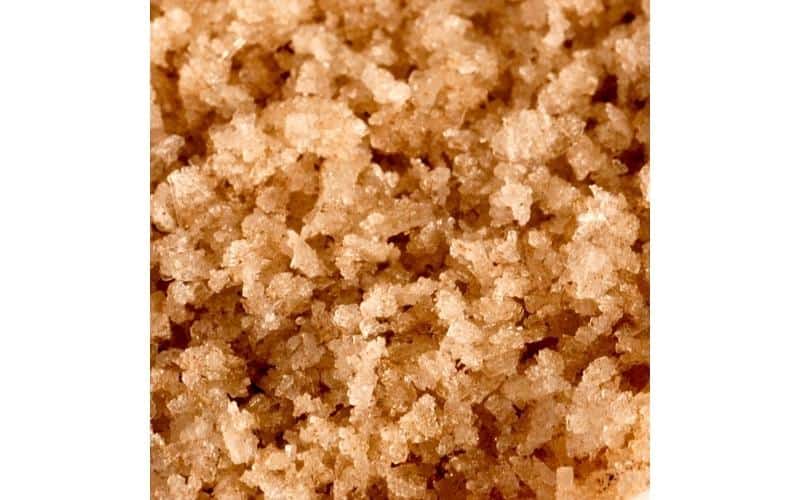
It’s not the purity of this salt that makes it special, although that does play a big part in Iburi Jio Cherry Smoked Salt’s claim to fame. What makes this salt so unique is its subtle smoked cherry-wood flavor.
There are no chemicals or liquids added, and all its punch comes from the 3-day cold-smoke process that infuses it with an almost bacon-like flavor profile.
It pairs really well with a good bourbon too, so next time you pour yourself a night-cap, why not add a few grains of some cherry smoked salt?
Rich beige in color with an amazing fragrance, this salt deserves its spot on the list of the Top 10 Most Expensive Salts In the World!
Why Is It So Expensive?
The seawater used in the production of Iburi Jio Cherry Smoked Salt is extracted from a depth of 2000-3000ft. That in itself is quite a task but it’s only the beginning.
As with all salt production, it’s a process that requires patience and time. It’s labor-intensive and requires skill.
Sprinkle it lightly over dishes to finish them off and add an extra dimension of flavor! How about pairing it with one of the world’s most expensive ice-creams?
4. Saffron Salt – $115 per Pound
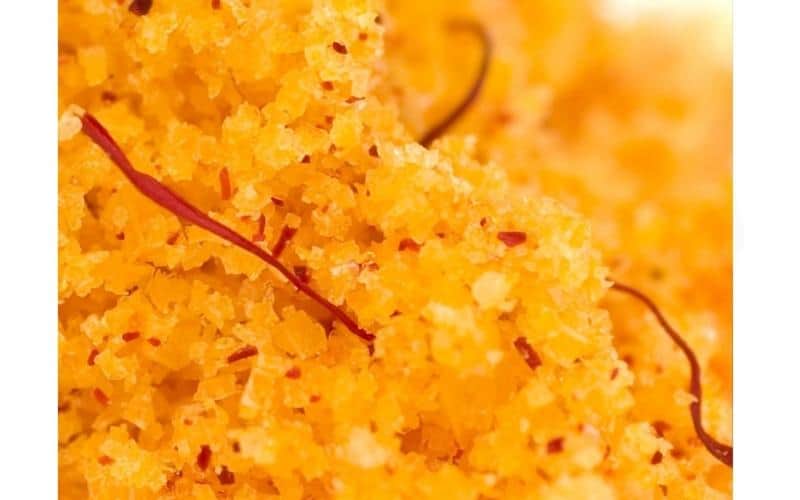
Take the world’s most expensive spice and infuse it into high-quality sea salt and you have one of the most expensive salts you will find.
A tiny amount of saffron is used to flavor the salt, which means you’re getting all of the benefits at a fraction of the cost of pure saffron.
Why Is It So Expensive?
Saffron is the stamen found in the crocus plant. It is harvested by hand in a labor-intensive process from a small-yield crop. Retailing at around $2,500 per pound, pure saffron is truly a luxury.
Mixed with carefully produced sea salt, it is clear to see why saffron salt deserves its $115 per pound price tag.
3. Bora Bora Sea Salt – $145 per Pound
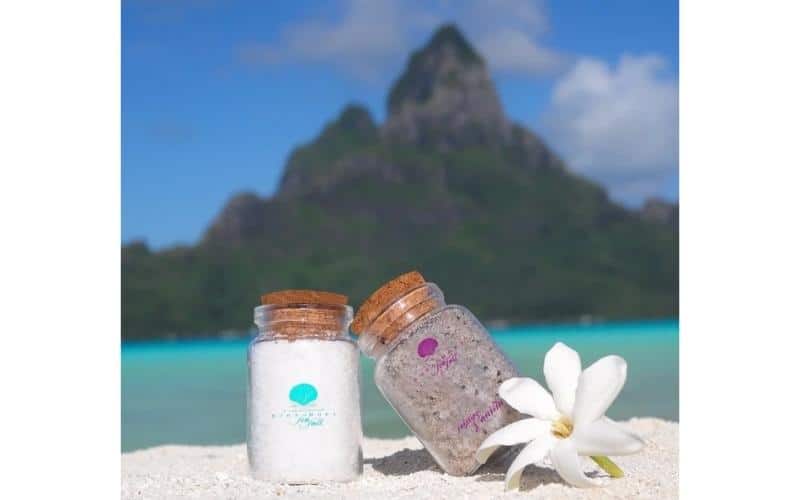
From the tropical islands of Bora Bora, ranked #6 on the Most Expensive Places To Travel list, comes a pure finishing salt that will astound you.
Water from the Pacific ocean is collected and processed using the power of the sun and the wind to produce a natural, environmentally friendly salt.
Being high in trace minerals means it has a bunch of health benefits too.
Why Is It So Expensive?
Made in small batches by hand, the labor-intensive process and the purity of this salt are what give it luxury status. Of course, there are other contributing factors.
The seawater in the South Pacific Ocean is so clean that it doesn’t have to undergo damaging treatments. As a result, the salt maintains its purest form during production.
2. Kamebishi Soy Salt – $155 per Pound
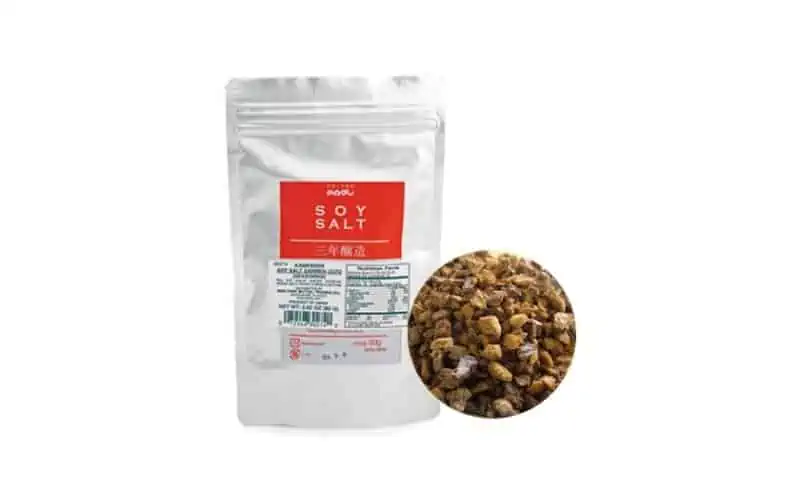
Essentially, soy salt is made from soya sauce which is dehydrated until salt crystals form.
Kamebishi Soy Salt is special because of the process that goes into the sauce.
When a new batch of soya sauce gets started, instead of using distilled water as their liquid, Kamebishi uses a small starter amount from 2yr-fermented vats of soya sauce.
It is then fermented for a further 3 years, giving it great umami flavors and deep dark color.
A minimum of 5 years is required to produce the soya sauce. Only then can the 14.5% salt content be extracted.
Why Is It So Expensive?
It ranks as the second most expensive salt in the world because of the time it takes to produce and only small batches are produced annually.
Sounds like a real treat sprinkled over the top 10 most expensive veggies in the world!
1. Korean Bamboo Salt (Jugyeom) – $200 per Pound
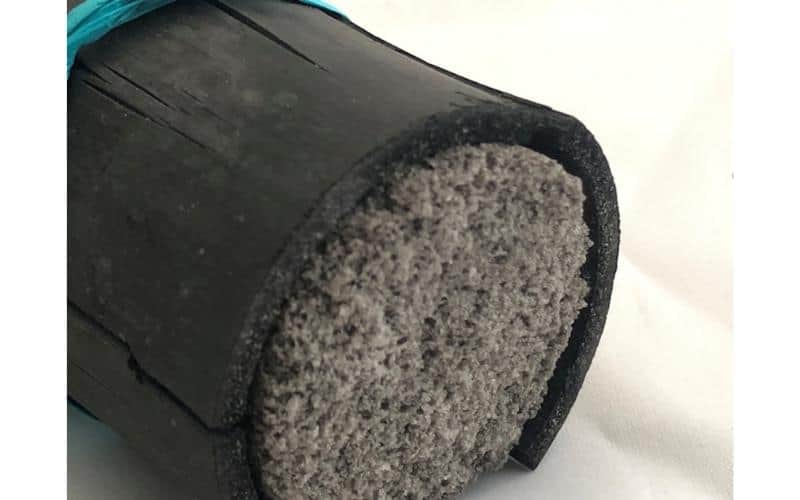
The most expensive salt in the world is Korean Bamboo Salt, also referred to as Korean 9x or Amethyst Bamboo Salt because of its color.
Seawater is harvested, heated and salt crystals are extracted. Job done for most salts. But this is only the beginning for Korean Bamboo Salts.
The salts are then packed into bamboo sticks and roasted 9x in fires measuring from 1400 to 1800 Fahrenheit. With each roasting, the bamboo burns away and new sticks are packed.
This process, which takes 40-45 days, purifies the salt and infuses it with all sorts of flavor and medicinal value. It also gives the salts a deep purple color.
Why Is It So Expensive?
Making Korean Bamboo Salts is a two-step, labor-intensive process done entirely by hand. The method is as old as time, making it a product steeped in tradition and specific knowledge.
Higher in essential minerals (like potassium, iron, and calcium) than other sea salts, these salts also have many health benefits. Improved digestion, oral health, and skincare are on the list of things Korean Bamboo Salt is good for. It’s also known to have anti-inflammatory properties and could help fight cancer.
And Those Are The Most Expensive Salts In The World
While researching this article, we found one more for the list of the world’s most expensive salts – Hawaiian Alaea Salt – so we decided to include it as an honorary member!
It looks intriguing, as it is actually a combination of Hawaiian Black Lava Salt, or Onyx Salt, and red volcanic clay. The end result is a pink-colored salt that tastes amazing but is definitely not cheap. 1lb will set you back about $30!
There is no doubt that salt remains one of the most expensive commodities on Earth. Interestingly, the methods of extraction used to harvest these salts vary from deep-sea production to simple evaporation of seawater. Of course, there are also variations in price based on other factors, like skill, labor, and rarity.
Which salts are you putting on your bucket list to try? Have you eaten any exotic salts that we should know about?
Take a look at our blog for more of the world’s most expensive culinary luxuries!

